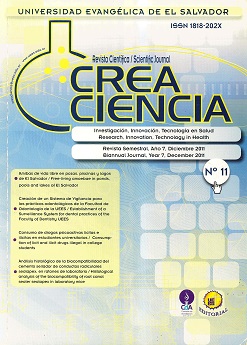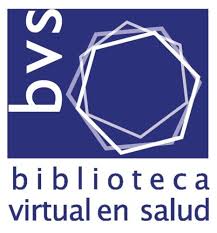Free-living amoebas in pools, pools and lakes of El Salvador
DOI:
https://doi.org/10.5377/creaciencia.v0i11.8142Keywords:
free-living amoebae (AVL), reservoirs of water, chlorinated pools, natural pools, non-chlorinated pools, El SalvadorAbstract
In this work, 60 water samples were examined from 30 sites in the Salvadoran territory where water reservoirs used by the population for their entertainment are located. The identification of each sample included: collection date, site location, surface or depth sampling, and chlorinated or non-chlorinated condition. Each sample was sedimented and it was studied from slide to slide, using 10X and 40X objectives of the microscope, in search of mobile forms of amoebae.
Additionally, four agar-agar plates seeded with live or dead Escherichia coli were seeded from the sediment.
Cultures were examined using a 4X microscope objective. Fresh preparations were made from the colonies and they were observed under a microscope with 10X and 40X objectives. Slides showing amoebae trophozoites were fixed with PVA (polyvinyl alcohol) and stained with trichrome stain.
AVL (free-living amoebae) were considered trophozoites that presented two or more of these characteristics: size from 13 to 30 micrometers, rounded pseudopods, and a nucleus with a prominent karyosome surrounded by a clear halo.
AVLs were found in two water samples taken from the bottom of pools with chlorinated water, and in one sample taken from the bottom of another pool with non-chlorinated water.
Downloads
Published
Issue
Section
License

This work is licensed under a Creative Commons Attribution-NoDerivatives 4.0 International License.
Los artículos de Crea Ciencia están publicados en acceso abierto bajo una licencia CC BY-NC-SA 4.0 de la Universidad Evangélica de El Salvador.





















